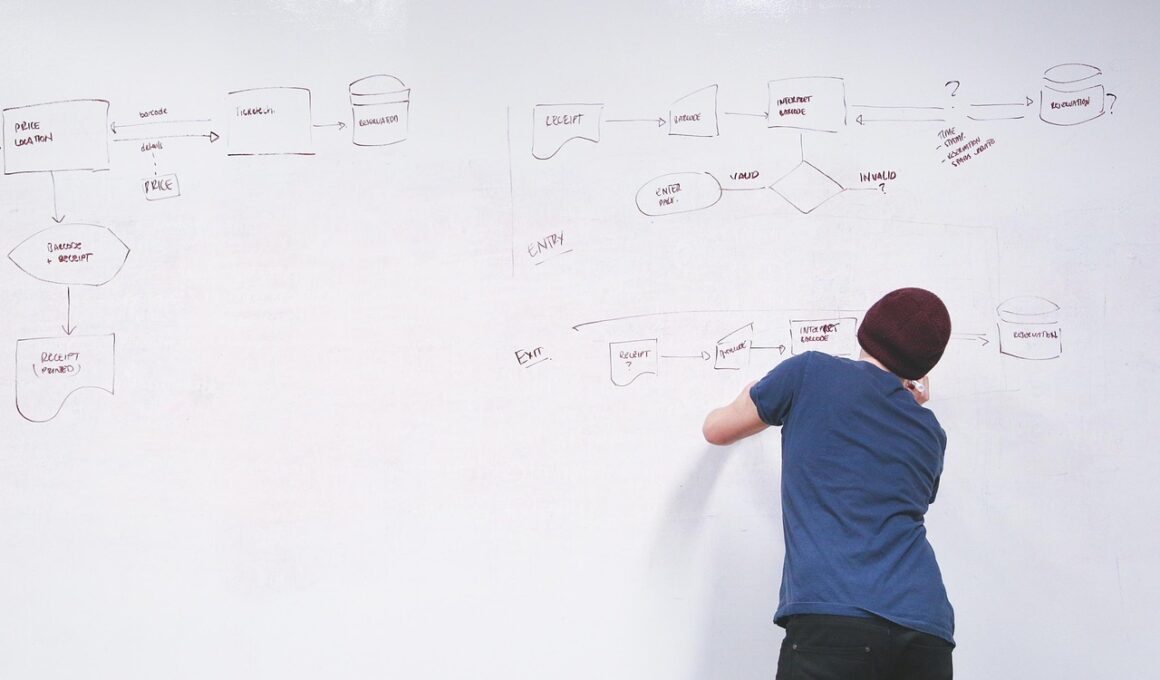Scenario Planning and Forecasting in Corporate Strategy
Scenario planning is a vital approach in corporate strategy, allowing organizations to explore possible future landscapes. It involves developing various plausible scenarios that encompass a spectrum of potential outcomes that could impact the business. These scenarios help decision-makers understand the uncertainties and complexities surrounding their strategic decisions. In essence, scenario planning encourages identifying key driving forces, recognizing uncertainties, and developing narratives about future environments. Companies can thus prepare for different possibilities instead of relying on a single forecast, which is often not reliable. The process typically starts with extensive research and data analysis, involving input from various stakeholders. Organizations can benefit significantly by leveraging insights from different departments, ensuring a well-rounded perspective on potential strategies. An effective scenario planning process not only enhances agility but also cultivates a culture of adaptive thinking among executives and teams. Companies that regularly engage in scenario planning can respond more swiftly to changes in the business environment and uncover new opportunities. Through continuous learning and proactive management, organizations can refine their strategies based on evolving scenarios and market dynamics. In this way, scenario planning becomes a powerful tool for corporate success.
Beyond traditional forecasting methods, scenario planning incorporates various qualitative and quantitative techniques. This blend allows organizations to visualize different futures, considering both statistical data and subjective interpretations. It can facilitate discussions about risk management and strategic options, which are crucial in times of uncertainty. In the ever-evolving corporate landscape, businesses face unprecedented challenges that require innovative thinking and adaptability. Scenario planning serves as a compass, helping organizations navigate through turbulent markets. It empowers teams to anticipate risks and devise strategies that align with their long-term vision. Instead of merely focusing on forecasts, firms start leveraging alternative narratives that depict various potential futures. This practice leads to a comprehensive understanding of the factors influencing their environment. Furthermore, companies can prioritize resource allocation and readiness plans more effectively when they incorporate a scenario-based approach. It encourages sensing changes early and adapting strategies accordingly, which is essential for sustained competitiveness. By engaging in scenario planning, firms can also identify new market opportunities and adjust their business models. In turn, this allows them to capitalize on shifts in customer preferences and emerging trends, solidifying their market presence.
Implementing Scenario Planning in Corporate Strategy
To successfully implement scenario planning, organizations must establish a structured approach. The first step involves identifying key uncertainties and driving forces that will shape future outcomes. This can encompass variables such as economic trends, technological advancements, and competitive dynamics. Stakeholder engagement is critical, allowing teams to bring diverse perspectives to the process. Once uncertainties are identified, organizations can develop detailed scenarios that outline plausible futures. These scenarios should be crafted in a narrative format, painting a vivid picture of how each future might materialize. Therefore, ensuring that stakeholders can relate to and understand each scenario is essential for effective engagement. Following the development of scenarios, the organization should assess potential impacts on strategic objectives and identify necessary actions that align with various outcomes. This not only informs decision-making but also improves organizational resilience to sudden changes. Regularly revisiting and updating scenarios is equally important, as it ensures that the organization remains aligned with the changing environment. By continuously engaging in scenario planning, organizations foster a dynamic strategic planning process that evolves with market realities. Ultimately, this proactive approach enhances corporate strategy.
Apart from enhancing strategic decision-making, scenario planning fosters a culture of collaboration within organizations. Facilitating discussions across departments leads to a comprehensive understanding of the external environment. This collective approach encourages individuals to challenge assumptions and engage in critical thinking. A diverse team can significantly improve the quality of scenarios created, as different viewpoints reveal potential blind spots. Moreover, organizations develop a shared language around uncertainties, which promotes alignment in strategic initiatives. Engaging in scenario exercises can also serve as valuable training for teams, preparing them for future challenges. Employees develop the capability to think strategically and take ownership of their roles within the broader corporate strategy. Therefore, organizations can create a stronger foundation for goal alignment and team cohesion. Scenario planning brings clarity to complex situations, ensuring that everyone understands the potential impacts of their actions. This collective mindset is instrumental in driving the organization toward a more agile and responsive framework. In doing so, companies can bolster their competitive edge, adapting seamlessly to external shifts in a robust manner that fosters resilience and innovation.
The Role of Technology in Enhancing Scenario Planning
The incorporation of technology into scenario planning has transformed traditional methodologies significantly. Advanced analytics tools enable organizations to gather vast amounts of data from diverse sources. This data is essential for creating realistic scenarios that reflect potential future trends accurately. Machine learning algorithms can identify patterns and correlations that may not be visible through manual analysis. By leveraging technology, firms improve their forecasting capabilities, allowing for more precise scenario development. Additionally, technology facilitates simulations that help visualize the impact of various scenarios on business outcomes. Scenario planning software can streamline the process, ensuring teams collaborate seamlessly. Furthermore, cloud-based solutions allow for real-time updates, keeping all stakeholders informed about the latest developments. The agility provided by digital tools empowers organizations to adapt quickly to changes and uncertainties in their environment. Virtual workshops offer creative avenues for brainstorming and collective scenario evaluation, enhancing engagement and participation. By embracing technology, companies ensure that their scenario planning processes are efficient and impactful. Overall, integrating technological advancements into scenario planning enhances the quality of strategic insights and enriches corporate strategy implementation.
Organizations must recognize the challenges inherent in scenario planning to maximize its benefits. First, the susceptibility to cognitive biases can hinder the scenario creation process. Decision-makers must actively seek diverse opinions to counteract these biases. Additionally, companies may face resistance from employees who are accustomed to traditional forecasting methods. Providing education around the benefits of scenario planning can mitigate this resistance. Another challenge lies in allocating adequate resources for effective scenario planning activities, from team training to technological investments. Not all companies have the luxury of dedicated time or budgets, which can limit the thoroughness of their scenario analysis. Furthermore, the dynamic nature of external factors may necessitate frequent scenario revisitations, which can strain resources. Organizations must cultivate a commitment to ongoing scenario planning, recognizing it as an integral part of strategic thinking. This commitment involves embedding scenario planning into the corporate culture, ensuring it is not merely a one-time exercise. Lastly, capturing lessons learned from each scenario planning cycle is crucial. Organizations can refine their approach based on previous experiences while documenting insights that can inform future exercises.
Conclusion: The Future of Scenario Planning in Corporate Strategy
In conclusion, scenario planning represents a critical capability for companies navigating the complexities of the modern business environment. As uncertainties and rapid changes continue to shape markets, organizations must adopt proactive thinking and strategic foresight. Scenario planning enables firms to visualize potential futures, assess risks, and devise effective strategies. By actively engaging in this process, decision-makers can enhance adaptability and resilience, staying ahead of competitors. Furthermore, organizations can identify emerging opportunities and pivot their strategies accordingly. Through a commitment to regular scenario planning practices, businesses foster a culture of continuous learning and collaboration. The integration of technology into scenario planning enhances its effectiveness, providing valuable insights into potential outcomes. Overall, the future of corporate strategy hinges on organizations’ ability to embrace scenario planning as a fundamental tool. By doing so, they ensure that they are not only prepared for uncertainties but equipped to thrive in a dynamic marketplace. Firms that prioritize scenario planning will be better positioned to drive innovation and respond adeptly to shifting market conditions, securing their long-term success and growth.
Success in scenario planning can cement a firm’s position in its industry, ultimately leading to impactful strategic outcomes.


